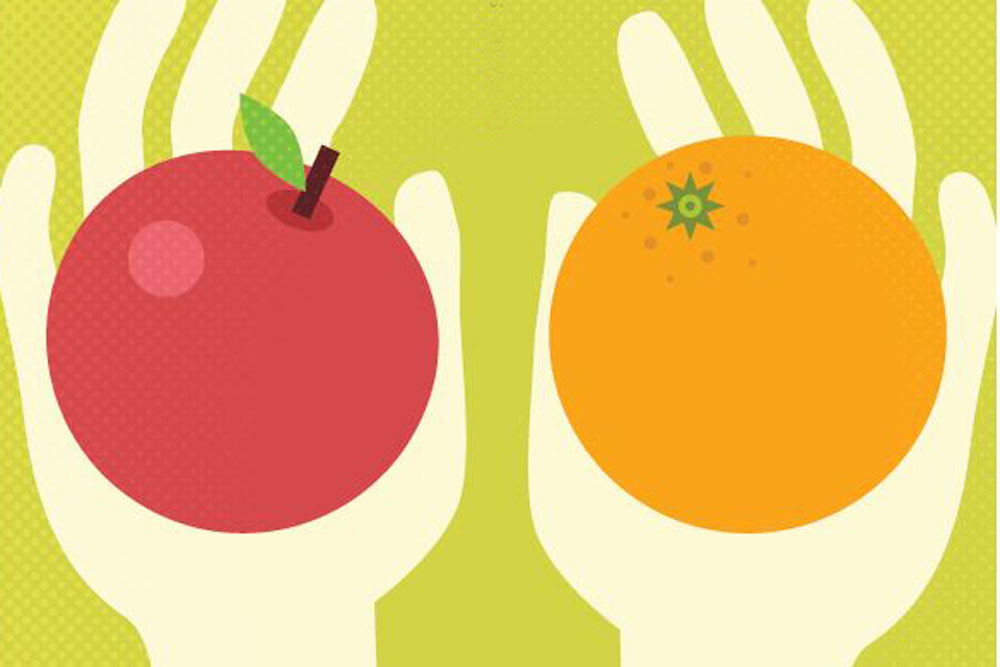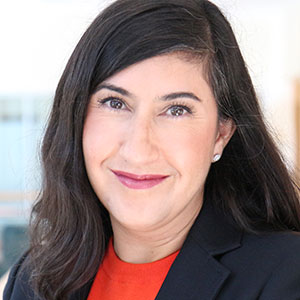
How We Decide
WHEN PATRICIA HOLLEN ENTERED THIS WIDE-OPEN FIELD OF STUDY
as a young pediatric nurse practitioner in the 1970s, she was helping teenagers with substance abuse problems and desperately trying to understand just how it was that they made such poor choices.
“They all thought they were excellent decision makers,” she recalls.
It was challenging work, and when she sought guidance in available research on health-related decision making, she found none. So Hollen determined to make it her own.
Fast-forward several decades and Hollen, her students, and UVA colleagues have laid the foundation for decision-making scholarship to guide and empower patients struggling to act amid highly complex and stressful treatment situations. Against the backdrop of our technology-driven health care system, quality decision-making tools—deceptive in their simplicity—are often overlooked. But thoughtful research has proven that how we make healthcare decisions, especially when chronic and life-limiting disease strike, has everything to do with our long-term prognoses, our stress, our levels of regret, and has the power to inform how we proceed from diagnosis to our final days.
“It’s not the decision per se but the outcome that has importance,” says Hollen, who retired in May. “It’s important that we are recognizing decision conflict and regret—and that with these kinds of tools, we can reduce the stress.”
In her own work, Hollen’s interventions were informed by psychologists Irving Janis and Leon Mann’s theories that acknowledge the two powerful opposing forces affecting an individual’s ability to act: the stress that can inhibit sound decision making, and the high-level thinking needed to make a serious choice.
In facing a treatment decision, a patient’s stress hinges on three factors: the risk stemming from a decision’s consequence; the hope of finding a better solution outside the parameters of current choice; and the pressure of time. These elements influence the quality of one’s decision-making ability, and whether that choice will leave one feeling at peace or not—an emotional burden that can reverberate for years.
For patients and families dealing with cancer, this distress is well documented. Treatment options and complications can be poorly explained. Prognostic uncertainty adds more layers of gray. Patients struggle to absorb the avalanche of information, and have difficulty discussing their preferences. Misunderstandings and unrealistic expectations may result. Studies have shown that post-traumatic stress is common among family members of ICU patients, especially for those who share in end-of-life decisions. Often, overwhelmed patients and family members turn to the nurse at the bedside for help.
PhD student Lourdes Carhuapoma, an acute care nurse practitioner, sees this struggle up close.
Even though “information is provided, families are left without additional help to make these decisions,” she says. “That is where there’s a disconnect. Families need support in how to put all this information in context.”
When every treatment option carries a downside, patients must still make sense of the information, reflect on their personal values, and what is important. But inexperience, and lack of expertise can make discussions with healthcare teams difficult.
“The way we clinicians have conversations is often challenging to patients,” says Maureen Metzger, assistant professor of nursing, who studies advance care planning for patients with end-stage kidney disease. “We talk a lot about medical interventions, but ‘good,’ or ‘bad’ decisions depend on context, and it’s hard for patients to weigh in unless they’ve had a lot of experience.”
Which most don’t. Metzger points to decision aids as a way of building bridges between patients, caregivers, and providers. By exploring what outcomes are possible with a particular medical intervention, patients can weigh in on what would give them a reasonable quality of life—and what would be unacceptable.
“That is their area of expertise, and this information should be used to direct goals of care,” she says.
With multimillion-dollar grants from the National Institute for Nursing Research, the National Cancer Institute, and elsewhere, UVA nursing faculty like Metzger are filling a critical gap with decision aids that equip patients and their families to have a seat at the table, their priorities recognized and respected. Building off of Hollen’s groundbreaking decision aid for lung cancer patients, professor Randy Jones is using that model to test a decision tool for patients with advanced prostate cancer, while a younger generation of researchers follow in their mentors’ footsteps, tailoring interventions for other clinical populations.
“IT REALLY HELPED ME SLOW DOWN”
So how do decision aids look in action? They start with a few basic questions.
Because the best decisions are made with social support, patients are asked to identify a family member or trusted friend for emotional support, someone to participate in decisions and attend clinic visits. An initial questionnaire focused on patients’ decision-making style often opens the discussion.
“Decision styles can be active, collaborative or passive,” explains Jones. “Knowing what your style is will help you understand and make an informed decision. We are not trying to change patients’ decision style, but do this so that, at the end, they will believe they made the best decision they could with less regret.”
A decision balance sheet—a simple, one-page summary—is used to clarify a patient’s values and preferences. Most often, these are completed with the nurse, and have the patient weigh the particular benefits and risks of a treatment course. The physician uses this information to guide subsequent visits and conversations, and later, structured time allows everyone to meet again and, ultimately, arrive at an acceptable, well-informed decision to determine what’s next. In addition to educational materials specific to their disease, patients receive audio narratives on CD so they can hear what others in similar situations have done.
Using this model, Hollen and Jones tested this intervention on 80 patients with advanced prostate and lung, and newly diagnosed breast cancers. They found that those using decision aids understood their treatments better, and felt more involved in their care. Participants rated the tool highly, noting its simple process but profound power.
“I didn’t know that the decision was going to be so huge,” said one lung cancer patient. “It really helped me slow down, gave me an awareness of not just blurting out an answer.”
For another, the tool made her comfortable with a choice that was at odds with her provider’s.
“Even though [I decided] to have a double mastectomy, if the doctors had fought me on that, and I had gone with a lesser, or a different treatment, I don’t know that I would have been settled with it because what was important to me, really, was defined through that decision-making process,” she said “It also helped to communicate with the doctor what was important to me, whereas I may not have had the clarity to express those values to my doctor [without the tool].”
In some cases, the tool sparked a new conversation between patients and loved ones that allowed them to unburden themselves.
“It was surprising how relationships got closer with partners and providers when the decision aid was part of the process,” notes Jones. “The patient felt more at ease, and opened up with their support person, and felt more supported by the medical team, too.”
With a $2.2 million grant from the National Institutes of Health, Jones’s current multisite study with prostate cancer patients—at UVA’s Emily Couric Clinical Cancer Center, Virginia Commonwealth University’s Massey Cancer Center, and the Sidney Kimmel Comprehensive Cancer Center at Johns Hopkins University—will seek to quantify the aid’s effectiveness across demographics, an important factor given that African American men suffer disproportionately from prostate cancer.
The study will also offer a test for clinicians. If they see that the tool makes their time with patients more directed and meaningful, the decision aid stands a good chance of becoming part of the clinical routine.
1 in 5
Number of women with cancer in a single breast that opts to have both breasts removed
FIGHTING THE “ANGELINA EFFECT”
PhD student and oncology nurse Crystal Chu is testing a decision aid for patients who have been diagnosed with breast cancer in one breast, and are considering having both the cancerous and healthy breast removed—a procedure called a Contralateral Prophylactic Mastectomy, or CPM. Nearly one in five women with cancer in a single breast opt to have both breasts removed, despite the fact that there is no evidence it reduces mortality and increases survival.
It’s a phenomenon Chu sees frequently. Dubbed the “Angelina effect,” CPMs became more popular after actress Angelina Jolie opted in 2013 for a preventative double mastectomy after discovering a genetic predisposition for developing breast cancer. While Jolie aimed to empower women by speaking publicly about her decision, CPMs are hardly a quick and easy fix, Chu says. Such aggressive surgeries carry serious medical risks, including the risk of infections, post-operative pain, and longer recovery time—messages that Chu’s decision aid aims to impart.
“People are surprised to hear that not every breast reconstruction goes well, or looks good,” Chu says. “They don’t fully understand that it’s not so simple.”
There is growing evidence, too, that women who choose CPMs and have both breasts reconstructed often regret their choice down the line. And while numerous decision aids for breast cancer exist, none have addressed CPM specifically—until now. With mentors Jones and Hollen, Chu will test her decision aid in a pilot study on 50 local women next spring.
Like Chu, Carhuapoma—driven by harrowing clinical experiences in the neuro-ICU at Johns Hopkins Hospital—is developing a new decision aid for surrogate decision-makers of patients who’ve suffered a hemorrhagic stroke. The statistics for this group are brutal: half die within a month, while just 20 percent survive with full functional recovery at six months. In the face of such odds, surrogates grapple with questions about quality of life, and life-sustaining technology, like ventilators and feeding tubes, complicate the choice between withdrawing support or pursuing treatment. The window to decide for these patients is often narrow. Carhuapoma’s intervention—which she’ll test on 40 surrogates later this fall with recruits from Johns Hopkins Hospital—aims to gently but firmly guide this agonizing process.
“Some families have advance directives, but that’s not so helpful with neurological injuries, because we can maintain life for so long now,” explains Carhuapoma. “We are talking about personhood, something you can’t resolve with technology.”
STARTING THE END-OF-LIFE CONVERSATION
Compared to patients with cancer, those with advanced kidney disease are less likely to have considered end-of-life wishes. In fact, despite an emphasis on advance care planning in the field, most dialysis patients report never having had these critical discussions with their providers. It’s this population Metzger aims to help by creating a tool focused on end-of-life decision making.
“My work is about communication as an intervention, training healthcare teams to have these conversations over time, during [periods of] relative medical stability” for the patient, she explains. “It’s more to receive information from the patient, [to hear] what their concerns are, and their understanding of their prognosis, so that we can understand where to direct attention and resources. We want outcomes that are consistent with their values.”
Studies indicate that many renal patients find it difficult to balance their own wishes with those of their loved ones. Often, the discord is visible when the patients expresses a wish for a conservative approach—medication to manage their symptoms, perhaps—while caregivers wish for the more aggressive dialysis.
“Patients sometimes feel they’re not given much choice,” says Jonathan Yoder, a family nurse practitioner and PhD student who is analyzing these conflicts. And while they often lack plans for how they want their end of life to be, renal patients are more likely to undergo high-intensity interventions immediately prior to their death. Under Metzger’s and Jones’ guidance, Yoder’s qualitative study will, this spring, explore how palliative care, especially if introduced early on, might improve shared decision making among patients, caregivers, and providers.
For her part, Metzger is currently conducting a trial at UVA involving 144 patients with end-stage kidney disease, and their caregivers, with co-investigator Emaad Abdel-Rahma, a UVA nephrologist, with funding from the National Institute of Nursing Research (other trials are taking place at Emory University and the University of North Carolina). The study’s focus doesn’t seek to buttress decision aids’ importance as much as it aims to model a way that clinicians might use them to inform care.
“We’ve already shown that it’s important to do informed, shared decision-making,” Metzger says. “Now, the question is, how do we best accomplish that? How do we educate and train clinicians and make it part of the clinical flow?”





